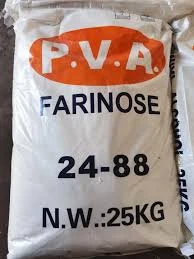The Role of Additives in Cement Production
Cement production is a cornerstone of the construction industry, serving as one of the primary ingredients in concrete. However, raw cement itself can benefit significantly from the incorporation of various additives. These materials not only enhance the performance characteristics of cement but also contribute to sustainability efforts within the sector. This article explores the role of additives in cement production, highlighting their benefits, types, and implications for the future of construction.
Understanding Additives
Additives are materials that are mixed with cement to improve its properties. They can help modify the setting time, increase durability, reduce permeability, and improve workability. The use of additives in cement not only enhances the final product's performance but can also lead to cost savings and reduced environmental impact during production and in application.
Types of Additives
1. Chemical Additives These include plasticizers, superplasticizers, retarders, and accelerators. Plasticizers improve the workability of cement mixtures without adding extra water, while superplasticizers allow for even greater fluidity and workability. Retarders are essential in hot climates where they delay the setting time, ensuring that the cement can be transported and placed without premature hardening. Conversely, accelerators hasten the setting time, which is beneficial in cold weather conditions.
2. Mineral Additives These additives include fly ash, slag cement, and silica fume, which are by-products from other industries. When incorporated into cement, these minerals can improve the strength and durability of the concrete. For example, fly ash can enhance the pozzolanic properties of cement, leading to a denser microstructure and reduced permeability. Slag cement contributes not only to improved mechanical properties but also reduces the carbon footprint of concrete, as it often replaces a portion of Portland cement.
additive for cement

3. Natural Additives Some additives are derived from natural materials. For instance, metakaolin is a calcined clay that offers high pozzolanic reactivity and can significantly enhance the strength and durability of concrete when added to cement mixtures.
Benefits of Using Additives
The incorporation of additives in cement production yields several advantages
- Enhanced Performance Additives can improve the physical and chemical properties of cement, making the final concrete more durable and resistant to environmental factors such as moisture and chemicals. - Sustainability Many mineral additives are by-products of other industrial processes, helping to reduce waste and lower the carbon footprint associated with cement production. This aligns with global sustainability goals as the construction industry strives for greener practices.
- Cost Efficiency By enhancing the performance characteristics of cement and concrete, additives can lead to savings over the lifecycle of the building or structure. For instance, increased durability can mean less maintenance and repair over time.
Conclusion
The use of additives in cement production is a vital component that can significantly influence the performance of concrete. With a wide range of chemical and mineral additives available, manufacturers can tailor cement formulations to meet specific project requirements while also addressing sustainability and environmental concerns. As the construction industry moves toward more eco-friendly practices, the importance of optimizing cement with appropriate additives will only continue to grow. By embracing these innovations, the industry can enhance not only the quality of its products but also lessen its ecological impact, paving the way for a more sustainable future in construction.
-
Rdp Powder: Key Considerations for Wholesalers in the Building Materials IndustryNewsJul.08,2025
-
Key Considerations for Wholesalers: Navigating the World of Hpmc - Based ProductsNewsJul.08,2025
-
Hpmc Detergent: Key Considerations for WholesalersNewsJul.08,2025
-
Key Considerations for Wholesalers: China Hpmc For Tile Adhesive, Coating Additives, Concrete Additives, and MoreNewsJul.08,2025
-
Crucial Considerations for Wholesalers: Navigating the World of Construction MaterialsNewsJul.08,2025
-
Key Considerations for Wholesalers Sourcing Additive For Cement, Additive For Concrete, Additive For Putty from Additive Manufacturer Shijiazhuang Gaocheng District Yongfeng Cellulose Co., Ltd.NewsJul.08,2025




